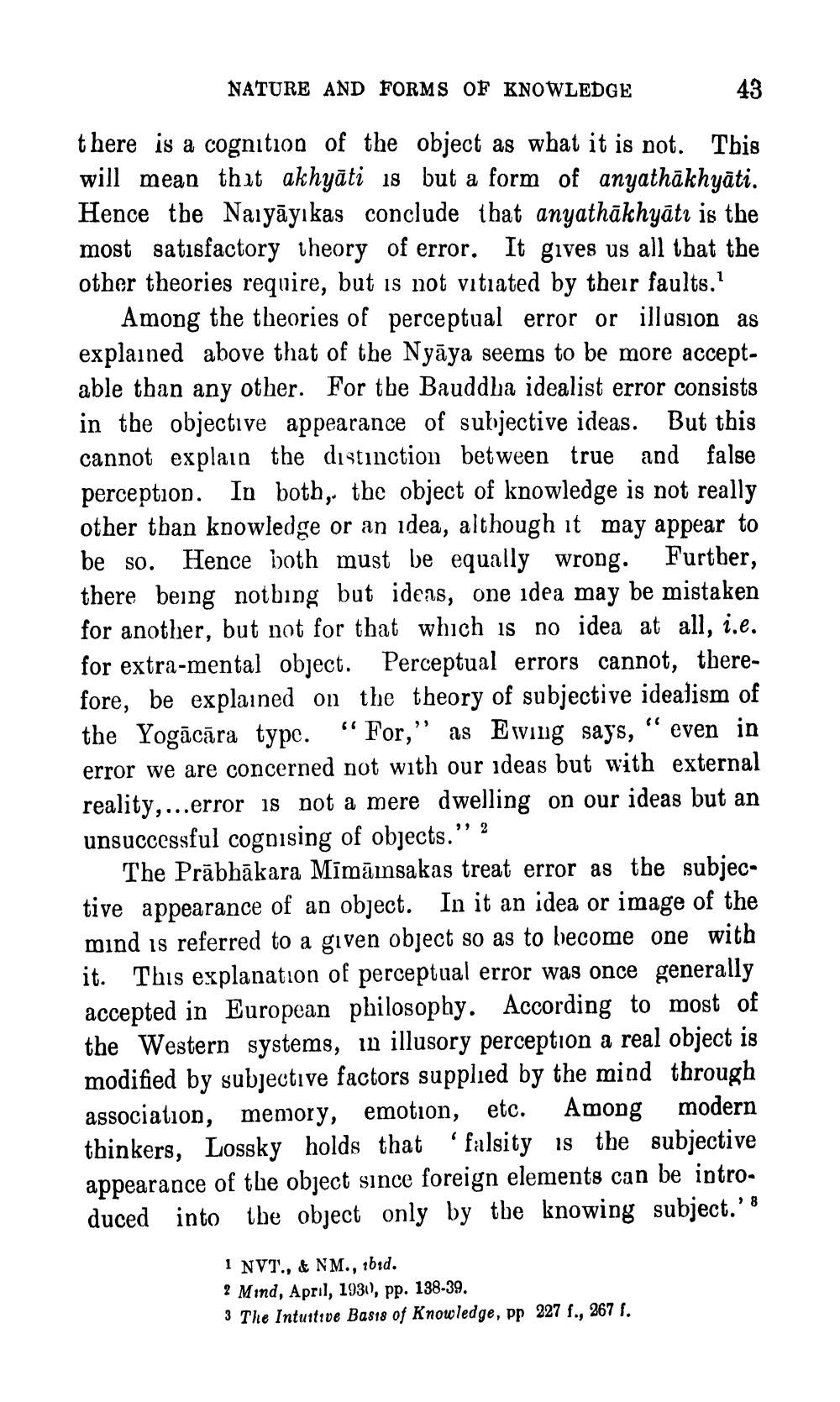________________
NATURE AND FORMS OF KNOWLEDGE 43 there is a cognition of the object as what it is not. This will mean that akhyāti is but a form of anyathākhyāti. Hence the Naiyāyıkas conclude that anyathākhyāti is the most satisfactory theory of error. It gives us all that the other theories require, but is not vitiated by their faults.?
Among the theories of perceptual error or illusion as explained above that of the Nyāya seems to be more acceptable than any other. For the Bauddha idealist error consists in the objective appearance of subjective ideas. But this cannot explain the distinction between true and false perception. In both, the object of knowledge is not really other than knowledge or an idea, although it may appear to be so. Hence both must be equally wrong. Further, there being not bing but ideas, one idea may be mistaken for another, but not for that which is no idea at all, i.e. for extra-mental object. Perceptual errors cannot, therefore, be explained on the theory of subjective idealism of the Yogācāra type. “For," as Ewing says, “even in error we are concerned not with our ideas but with external reality,...error is not a mere dwelling on our ideas but an unsuccessful cognising of objects.'' ?
The Prābhākara Mimānnsakas treat error as the subjective appearance of an object. In it an idea or image of the mind is referred to a given object so as to become one with it. This explanation of perceptual error was once generally accepted in European philosophy. According to most of the Western systems, in illusory perception a real object is modified by subjective factors supplied by the mind through association, memory, emotion, etc. Among modern thinkers, Lossky holds that 'falsity is the subjective appearance of the object since foreign elements can be introduced into the object only by the knowing subject.' 8
1 NVT., & NM., ibid. 2 Mind, April, 1931), pp. 138-39. 3 The Intuitive Basis of Knowledge, pp 227 f., 267 1.




